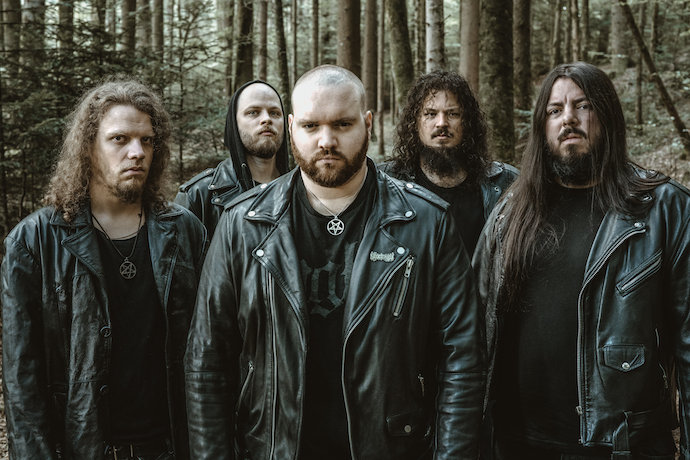
(In this first Synn Report of 2021 Andy Synn assembles reviews of all the albums by the Swiss band Stortregn leading up to their forthcoming fifth album Impermanence, which will be released on March 12th by The Artisan Era.)
Recommended for fans of: Naglfar, Necrophobic, Obscura
The proliferation and seemingly endless sub-division of genres can be both a blessing and a curse, depending on how you look at it.
Some people (myself included) often find it useful to break down existing/evolving genres into more specific sub-styles to help categorise them for potential listeners. But others find the endless proliferation of new sub-styles and sub-genres to be pointlessly confusing and counterproductive.
The truth is, of course, that genre terms and genre boundaries are amorphous and permeable and often change over time, especially when it comes to what counts as “extreme” Metal.
Case in point, the music of Stortregn (who hail from Geneva, Switzerland) straddles the boundary between Melodic Black Metal and Melodic Death Metal – influenced as much by the seminal chill of Dissection and Dawn as it is the agile melodic menace of the early Gothenburg scene (particularly Dark Tranquillity and At the Gates) – while also, especially on their more recent records, adding a razor-sharp technical edge to their sound.
But don’t just take my word for it. With the group’s fifth album set for release in March (which I’m sure we’ll be reviewing in full closer to the time) there’s no better time than the present to delve into their discography.
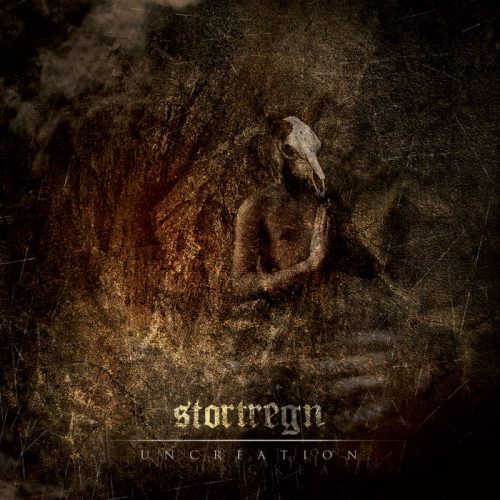
UNCREATION – 2011
As the scene-setting introduction of “IV” fades in the rear-view mirror, “The Eye of Judgement”, the opening track proper of the band’s first album, swiftly introduces you to the fundamental elements of the group’s sound in a seething torrent of high-velocity riffs and high-energy hooks, pounding drums and electrified tremolo lines, all positively crackling with melody and intensity.
“Without Return” continues in much the same vein, although the Dissection-meets-Dark Tranquillity vibes are, if anything, even more pronounced, with the song marrying icy, blackened bite to soaring melodic might over the course of just over four minutes, after which “The Uncreation” delivers an even more brutal and bombastic burst of high-intensity riffage, hellishly aggressive vocals, and furious, blast-fuelled drums, interspersed with the sort of shamelessly infectious melody that would have made old school In Flames turn green with envy.
And while “Road to the Land of Thule” slows things down a little in a way that doesn’t entirely benefit the record, thankfully “Through a Path of Prevarication” picks up the pace once again, taking the listener on another rollercoaster ride through the twin realms of Melodic Black Metal and Melodic Death Metal (which, as we all know, often aren’t separated by all that much), before “Nocturnal” drops the hammer with some of the punchiest (and catchiest) riffs and most densely-packed percussive patterns on the entire disc, not to mention some brilliantly brooding acoustic guitar work and shamelessly extravagant soloing courtesy of lead guitarist Johan Smith.
Concluding with “A Shape in the Mystical Haze”, the album’s longest and most ambitious track so far, Uncreation may very well wear most of its influences out in plain sight – as well as the previously mentioned Dissection, Dark Tranquillity, and In Flames, there’s also clearly a fair bit of Dawn, Sacramentum, and early At the Gates in the band’s DNA too – but it’s hard, if not impossible, to hold that against them, since they do it so well, with such infectious energy and enthusiasm, that only the most jaded and cynical of listeners will be able to resist getting swept up and swept away in the torrent.
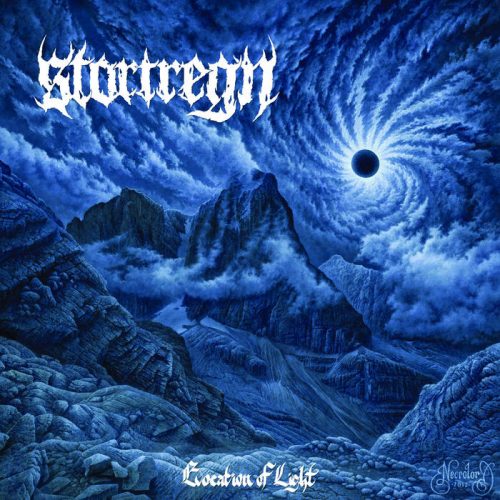
EVOCATION OF LIGHT – 2013
As good as the band’s first album is/was, there’s no denying that its creative palette and its well of influences was a little… limited.
Evocation of Light, by contrast, clearly paints with a bigger, bolder brush and a wider spectrum of colours, though it’s clear (if the gorgeous Necrolord cover art wasn’t enough of a clue) that the band’s focus remains more on the Black Metal side of things.
The sombre acoustic intro to “Inner Black Flame” soon gives way to a scintillating stream of twining tremolo and bountiful blastbeats, nimble, string-skipping guitar riffs and scarred, scowling vocals, equal parts Storm of the Light’s Bane and The Gallery, but buoyed up by a sharper, more modern production and delivery.
It’s a hell of a way to kick off the album (and I haven’t even mentioned the plethora of mournfully melodic lead guitar lines), and quickly demonstrates just how much the band have tightened up their sound while also expanding their vision and ambition.
It’s followed in quick succession (emphasis on “quick”) by the At the Gates meets Sacramentum attack of the title-track and the black-hearted, Necrophobic-esque “Between Shadows and Souls”, both of which are practically overflowing with dark hooks, devilish harmonies and demonically infectious riffs.
“Negative Theology” ups the ante and the intensity to another level with a blistering barrage of strafing blastbeats and stunning kick rolls, affirming itself as one of the most purely Black Metal tracks the band have ever recorded with its array of taut, twisted tremolo runs and moody, melodic arpeggios, after which “Moonshade” adopts a more modern Melodeath-meets-Melo-Black style that situates it somewhere between Nightrage, Naglfar, and The Black Dahlia Murder.
With “A Mournful Saraband” the band offer a momentary respite from the Black/Death deluge, setting the scene for the razor-sharp assault of “So Much Dust” – another one of the album’s many highlights – which balances more of that Black Dahlia-esque power and precision with a touch of the grim melodic grandeur of Old Man’s Child.
Concluding, triumphantly, with the tense, technical riffage and tumultuous tremolo runs of the Dissection-haunted “Thoroughfares” and the shamelessly epic, stunningly powerful, and subtly progressive strains of “The Call”, there’s no doubt at all, not then and not now, that Evocation of Light marked the moment the band truly began to come into their own.
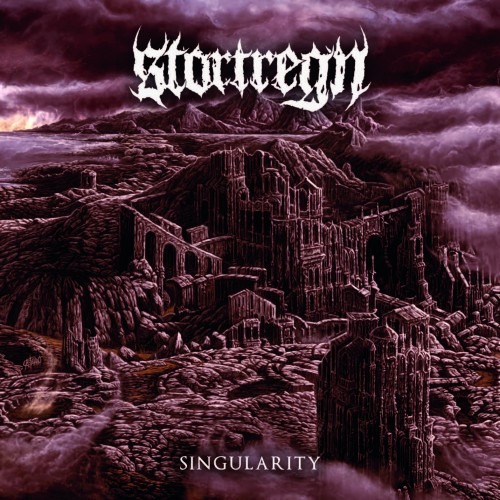
SINGULARITY – 2016
Heavier and more aggressive than its predecessor – there’s no denying that the band embraced their Death Metal side a lot more on this one – Singularity kicks in hard, following a brief, brooding acoustic intro, with the soaring leads, scorching vocals, and malicious metallic riffs of “Enlighten Salvation”, a song which could well appeal just as much to fans of bands such as The Black Dahlia Murder and Obscura as it does lovers of Watain and Thulcandra.
It then shifts, without missing a beat, into the high-tech, high-voltage, highly melodic rampage of “Acosmic Ascendant”, which finds the band throwing caution to the wind nice and early in a shreddy display of technical prowess and visceral intensity, after which “Crimson Depths” accents its savage, stomping rhythms and agile, At the Gates style riffs with a variety of intricately layered guitar harmonies and intensely savage vocal hooks.
“Vertigo” hearkens back to the band’s more purely Black Metal days with its reliance on rippling tremolo runs, bone-rattling blastbeats, and icily infectious leads, while also making artful use of carefully placed moments of soothing acoustic guitar to darken the song’s dynamic at key points.
By contrast, “Omega Rising” is thrashier, deathier, and more relentless in its embrace of ferocious, full-bore aggression… right up until it suddenly drops into a gorgeously grim section of acoustic-driven ambience, which signals the song’s switch into a distinctly more blackened mode which marries cold, chugging rhythms, undulating bass-lines, and crystalline harmonic leads in one phenomenal, frostbitten package reminiscent of both Old Man’s Child and Abigail Williams.
“Aurora” is so shamelessly infectious and majestically melodic that it’s practically impossible not to feel your blood-pumping and your heart racing with the urge to bang your head and scream along as Stortregn effortlessly combine their most melodic Death and Black Metal influences as if there were no difference or distance between them, while the follow-up, “Black Moon Silhouette”, does much the same… only faster, darker, and with more of an (early) Emperor meets (early) In Flames feel to it.
Last, but by no means least – well, almost last, as the album actually concludes with the atmospheric acoustic outro of “Elegy” – the band deliver one final dose of electric blackened tremolo and thunderous, deathly riffage in the shape of “Nightside of Eden”, and it’s here where you really begin to hear the band’s subtle progressive instincts start to make their way to the fore, both in the moments of more technical guitar and bass work and in the more complex, yet still crisply concise, songwriting, all of which points to even bigger, better, things to come on their next album.
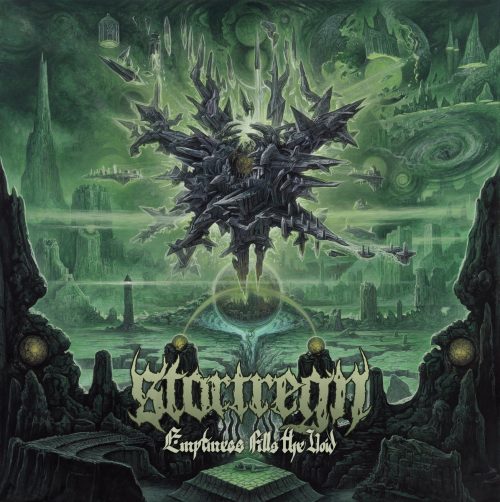
EMPTINESS FILLS THE VOID – 2018
As hinted at on their previous record, the band’s fourth album finds them evolving into a new form, one which amps up the technicality and virtuosity without forgetting their icy Black Metal origins or their love of dynamic Death Metal melody.
Opener “Through the Dark Gates” is a perfect introduction to this next stage of the band’s evolution, beginning with some sublime, scene-setting acoustic guitar work before bursting into life in an explosion of nimble, fret-dancing riffage and hooky melodic tremolo work, all building to an intense-yet-proggy bridge which combines strafing blastbeats and stratospheric leads with an undercurrent of brooding acoustic notes, and moody, mellifluous bass work.
The band’s DNA is still obvious – there’ll always be a strain of Dissection and Dark Tranquillity in their sound no matter what – but this track/album marks a clear step towards a more modern Melodeath-meets-Melo-Black approach which also dips into the more melodic side of the Tech Death scene too.
Case in point, the complex-yet-catchy riffs, lightning-fast drum work, and shamelessly shreddy lead guitar lines of “Circular Infinity” are strongly reminiscent of Obscura at their most focussed and concise, while the constantly fluctuating form of “The Forge” has a real Beyond Creation feeling to it, albeit one which is coated in a particularly fearsome and frostbitten sheen.
Similarly, “Nonexistence” displays all the energy and agility of Gorod in their prime, yet the soaring leads and gloomy acoustic parts are clearly steeped in the sinister majesty of the Swedish Black Metal scene, while the instrumental interstitial, “The Chasm of Eternity”, builds on this developing Prog/Tech vibe even more with its mix of unexpected, almost flamenco-like rhythms and fluid, full-bodied bass lines.
With its interlaced tapping parts, bold, bombastic rhythms, and urgent, undulating bass work, “Lawless” is probably the most shamelessly Tech Death track on the entire record, really doubling down on those Beyond Creation comparisons as the band race up and down the fretboard, but it’s followed in turn by what’s probably the album’s most Black Metal song, “The Eclipsist”, and its most classically Melodeath-influenced number, “Shattered Universe”, which, between them, showcase the various different facets of the band’s sound while also strengthening the ties which bind them together.
Concluding with the shamelessly extravagant (just wait until you get to the ending), eleven-minute epic “Children of the Obsidian Light” – think Black Metal Obscura meets Tech Death Necrophobic – Emptiness Fills the Void triumphantly and unequivocally establishes itself as the band’s finest hour (so far).
And while it will doubtless cause some ruffles among the Black Metal purists in particular – who are probably less likely to embrace the band’s hybrid vision than their brothers from other genres – it’s obvious (to me at least) that Stortregn still have a clear and abiding love for their roots, and will never forget where they came from or the bands who first inspired them.

These guys fucking rule! Listening to the first album right now, and that was enough for to go and get all their stuff. Thanks for the write up and touting them up.
Glad you liked them! Any time one of these articles introduces someone to a band they might otherwise not have known about I count that as a win.
I can’t believe I never heard of Stortregn before. I really dig them now. Thanks for this fascinating exploration of their evolution. I have to say, ALL of their albums are excellent. Among the various influences you mentioned, I hear vibes of Dissection popping up most consistently (at least in the first 3 albums).
By the way, “Stortregn” means “Heavy Rain”? (google translate)